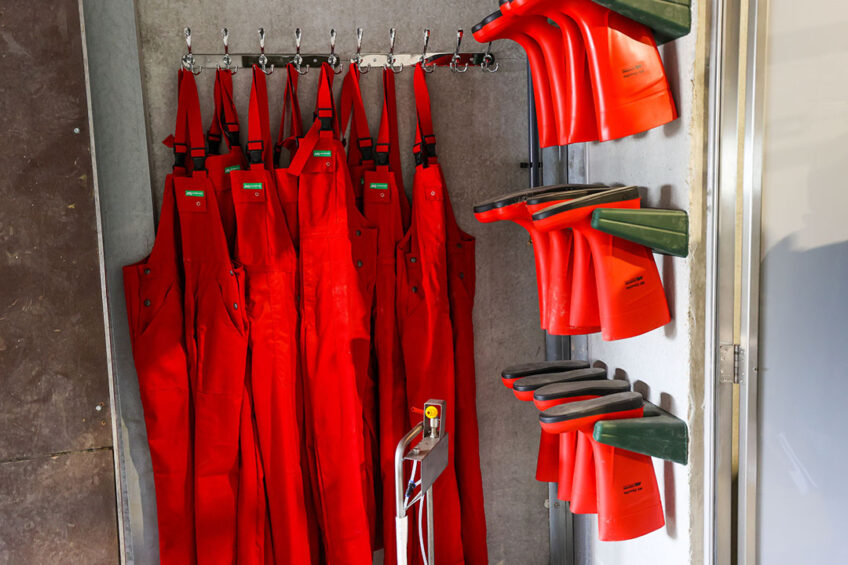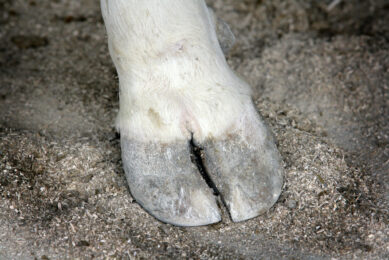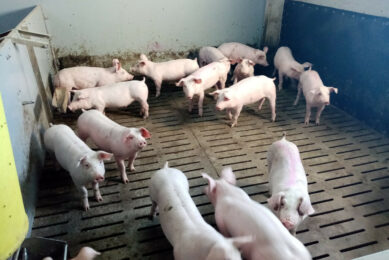How to apply biosecurity basics in swine farms

Infectious disease control and prevention is one of the most challenging aspects of intensive swine production systems. It affects pig welfare, food safety, public health, and economic profitability. Implementation of sustainable on-farm biosecurity programs is thus essential for the modern swine industry.
What is biosecurity?
Biosecurity is the application of measures to prevent the introduction of new pathogens, to minimise the impact of endemic pathogens, and to decrease the spread of pathogens within the herd. Proper biosecurity measures assist swine producers to reach the optimal growth by reducing the negative effects of subclinical diseases, and to achieve high reproductive performance by decreasing costly factors such as embryonic loss or preweaning mortality.
The elements of biosecurity
External biosecurity measures are aimed at decreasing the probability of introducing pathogens to a herd. Internal biosecurity measures reduce the spread of pathogens that are already present on the farm. Preventing effective pathogen transmission within a farm and between farms is a key concept in biosecurity. As a result, it is important to have basic knowledge regarding disease epidemiology such as the routes of transmission, the stability of the agent in the environment, and the role of fomites and vectors to set efficacious biosecurity measures.
New pig entry such as purchasing replacement breeders from an external source is one of the most common routes with the highest probability of new pathogen introduction
Major external biosecurity risk factors
External biosecurity measures intend to block the farm from pathogens coming from the outside world. Many of these measures are physical barriers or rules banning the introduction of certain animals, people or vehicles. New pig entry such as purchasing replacement breeders from an external source is one of the most common routes with the highest probability of new pathogen introduction.
Furthermore, the need for insemination doses purchased from an external source also increases the risk. People and vehicles are other important pathways for the introduction of new diseases. Fomites carried by people such as boots, and clothes, vehicles used to transport animals between farms or to the slaughterhouse, and drivers from these vehicles have an important role in the transmission of pathogens between farms. Moreover, feed ingredients and drinking water are other sources of introducing pathogens to farms.
Implementation of external biosecurity
The most effictive measure to decrease the introduction of external pathogens is quarantine. A well-designed, well-managed quarantine considers the incubation period of the disease, the duration of the contagious period for the disease, and the time needed to establish a diagnosis. Quarantine should be located far from the main units of the farm. A direct connection between farm and the quarantine unit must be blocked. Application of air filtration in the windows or ventilation inlets prevents pathogen introduction in high density areas.
Barrier measures, regulations restricting the entrance to the farm, and establishing a clear delimitation of clean and dirty areas minimise the risk associated with visits. Excluding high-risk feed ingredients from facilities, extending biosecurity to mills, considering proactive mitigation strategies, developing feed quarantine, and setting a validated sampling method of high-risk ingredients reduce the risk of pathogen entering the feed supply chain.
Farm staff are essential in internal biosecurity maintenance by applying biosecurity rules in the assigned areas of work
Major internal biosecurity risk factors
Internal biosecurity risk factors are associated with herd management, facility hygiene, and farm staff. Management measures tend to control the pig flow to prevent mixing pigs from different age groups by strict application of an all-in/ all-out system, accompanied by cleaning and disinfecting the facilities for the new batches of pigs. In addition, farm staff are essential in internal biosecurity maintenance by applying biosecurity rules in the assigned areas of work.
Implementation of internal biosecurity
Proper facility design is a basic biosecurity aspect to avoid moving pigs between different sections for loading, unloading or between production phases. It is recommended to establish a workflow following the pig flow from younger to older. Physical barriers such as doors, foot baths, areas for hand washing and changing boots, following the rule of non-contact between different stages of production, adequate ventilation system, proper flooring are effective internal biosecurity measures. Cleaning and disinfection of the pens include removing organic debris, washing with soapy water, rinsing, and drying, and finally disinfection. Furthermore, vaccines are critical for internal biosecurity of pig farms and prevent disease frequency.
Conclusion
Prioritising biosecurity measures based on the potential efficacy is essential in establishing a proper biosecurity programme in intensive swine production systems. However, a quantitative knowledge on transmission routes of the infection is required to create effective biosecurity plans.











